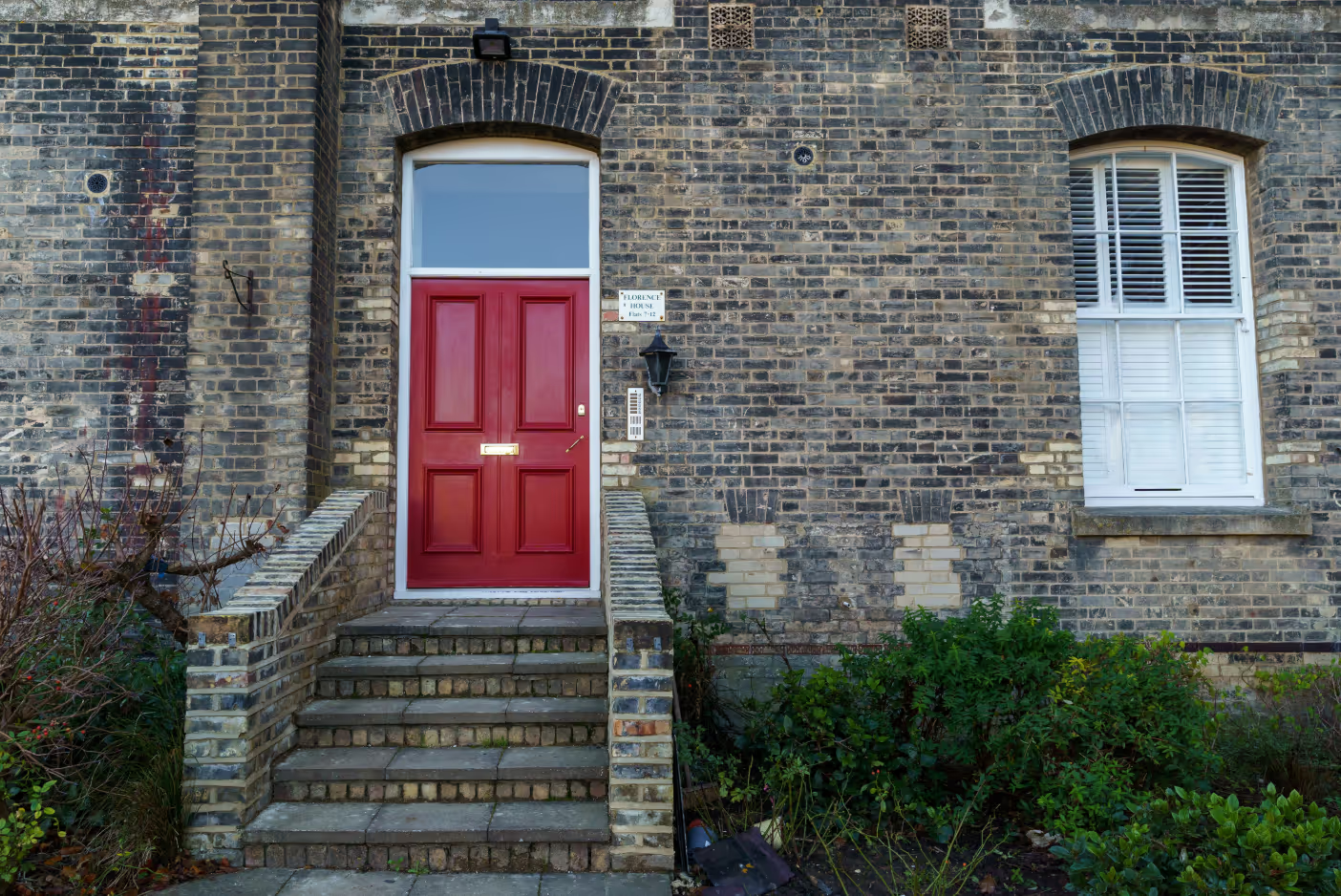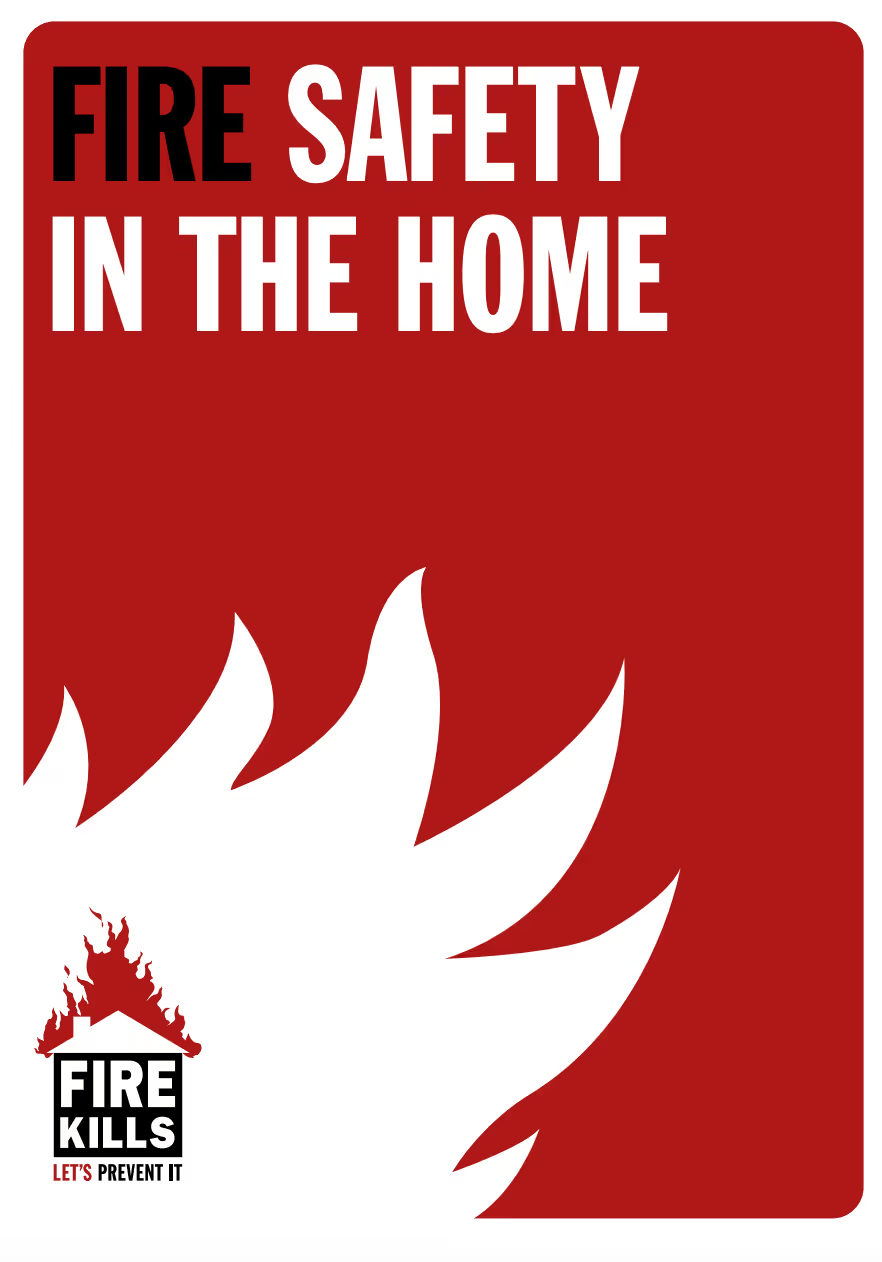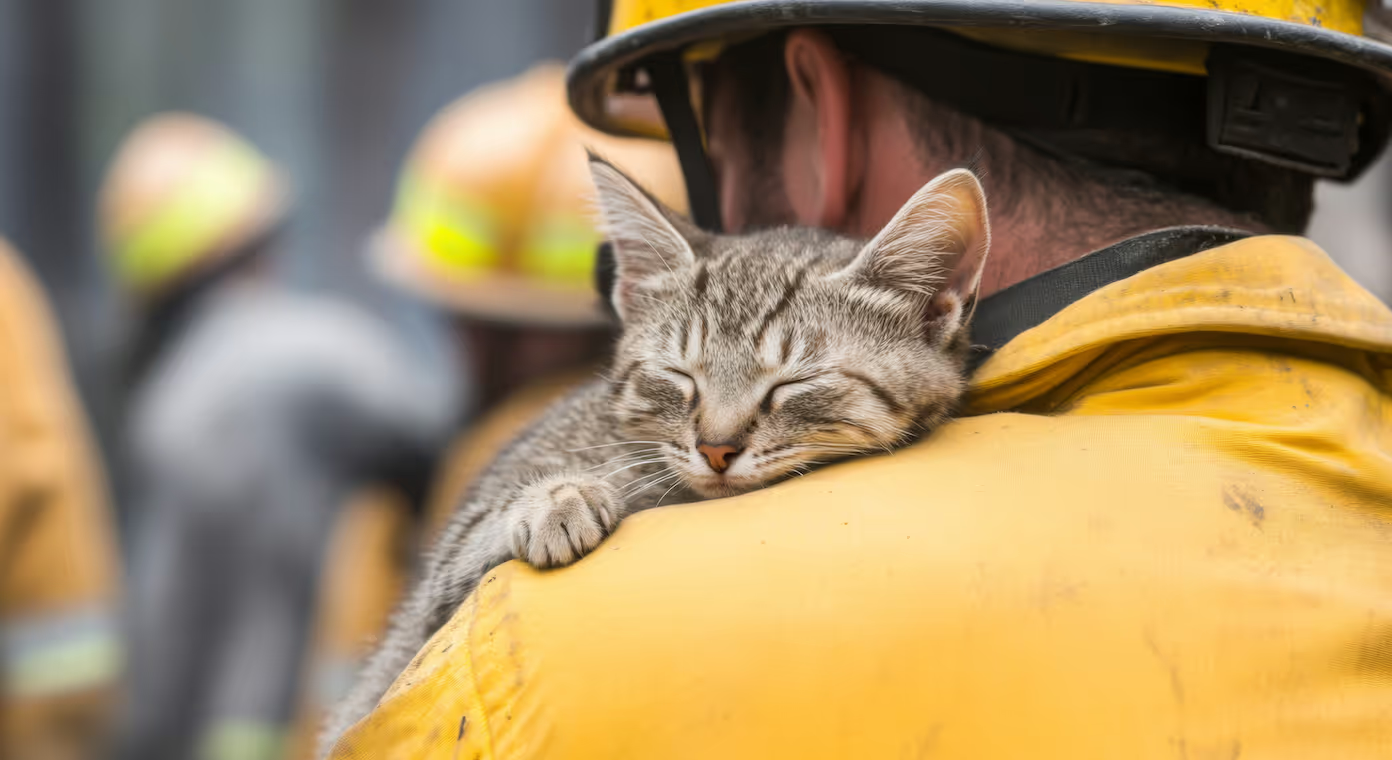
Stay Put Evacuation Strategy
A "Stay Put" strategy keeps people safe when they are not in an area directly affected by the fire.If the fire is not in your unit or in a common area that you are occupying, you should remain in your unit / that area with the doors shut and windows closed.You are not legally obligated to stay put if you wish to leave in the event of a fire.If a fire breaks out within your unit or a common area that you are occupying, you should:
- Immediately tell everyone in that area to leave the room/unit and close the door behind you.
- Call the fire service on 999.
- Wait outside, away from the building.
- Once everyone in that area is safe and away from the building, call the building management.
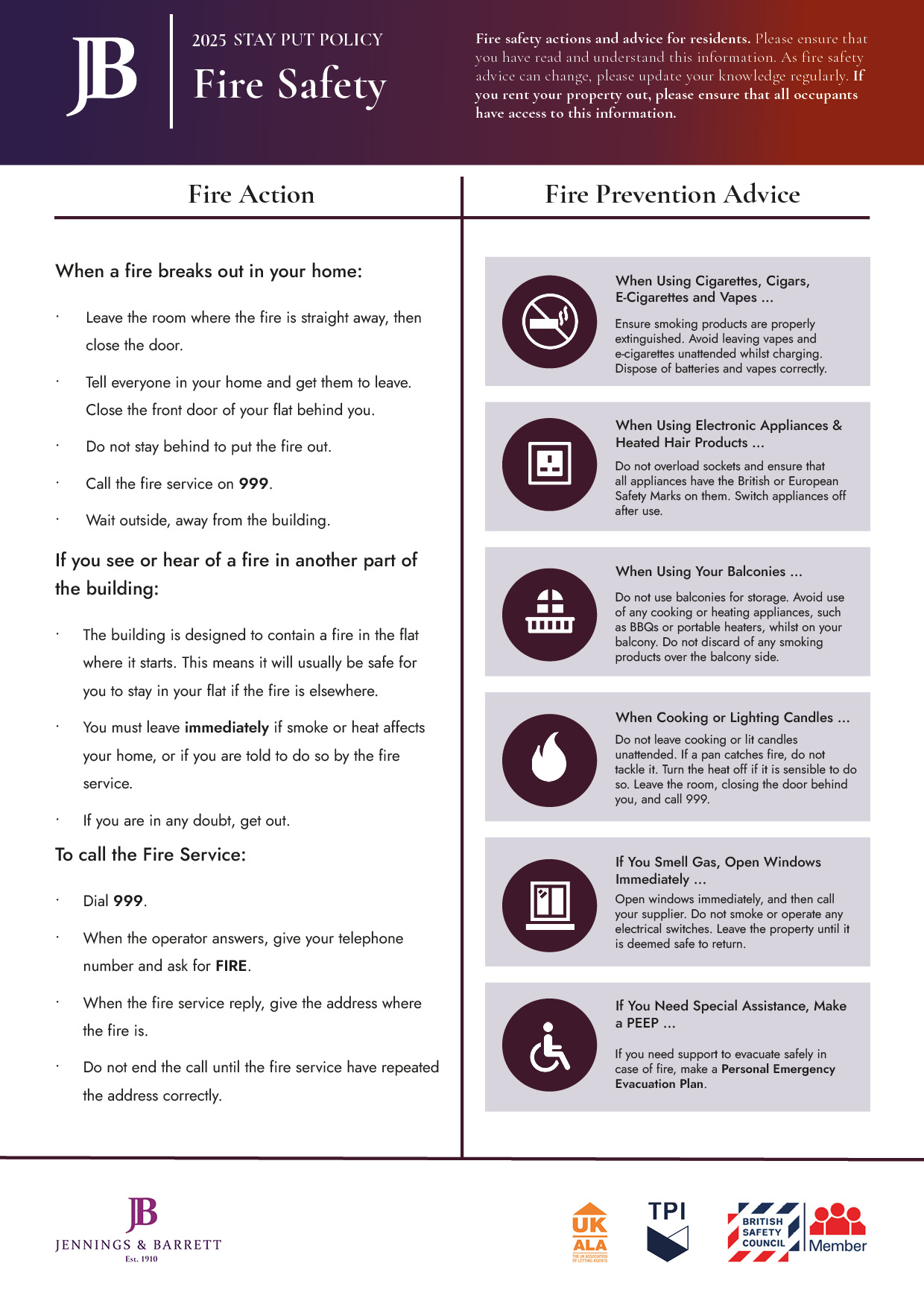
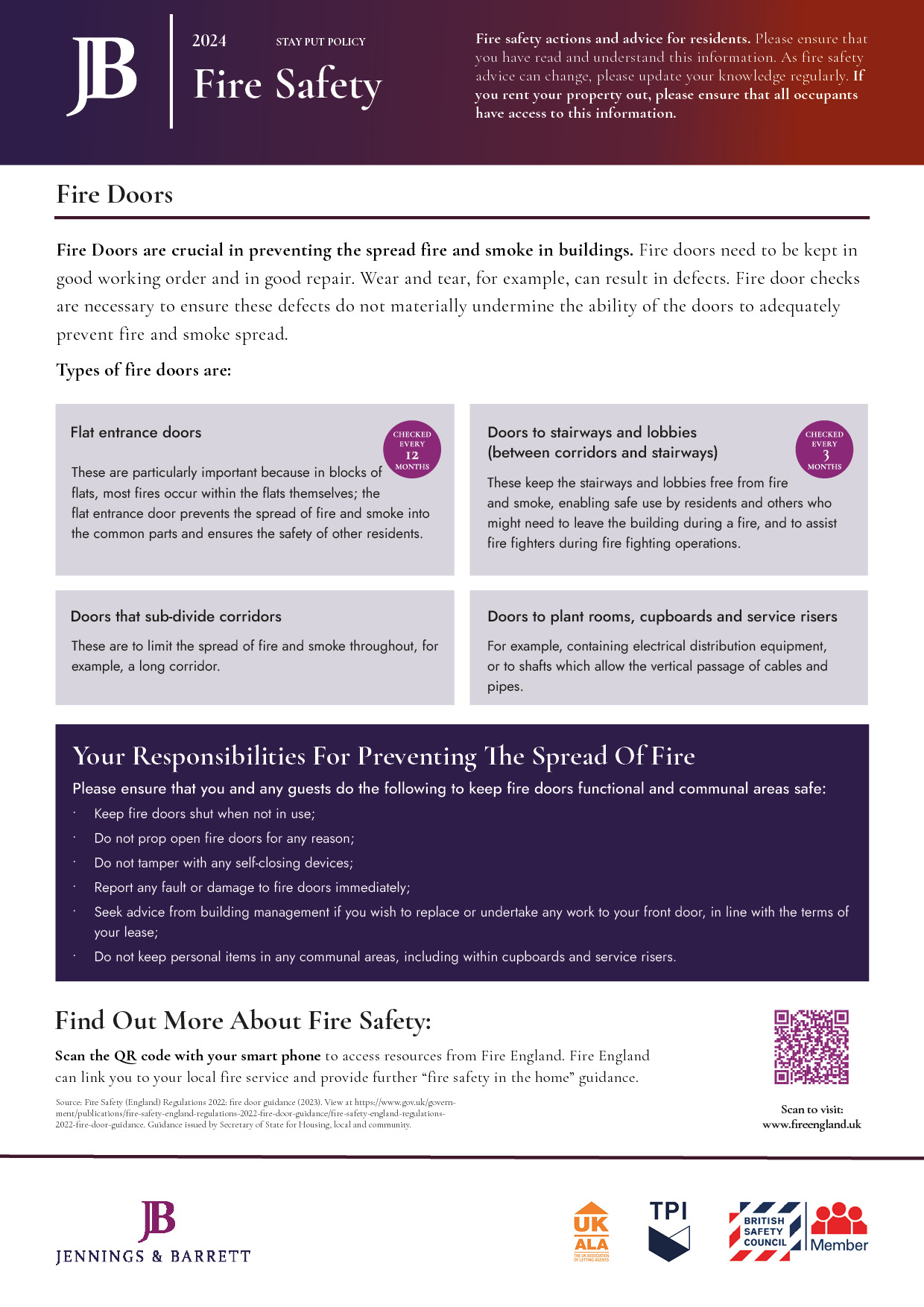
Simultaneous Evacuation Strategy
If your building has a Simultaneous Evacuation Strategy, in the event of a fire, all residents and occupants should evacuate the building.
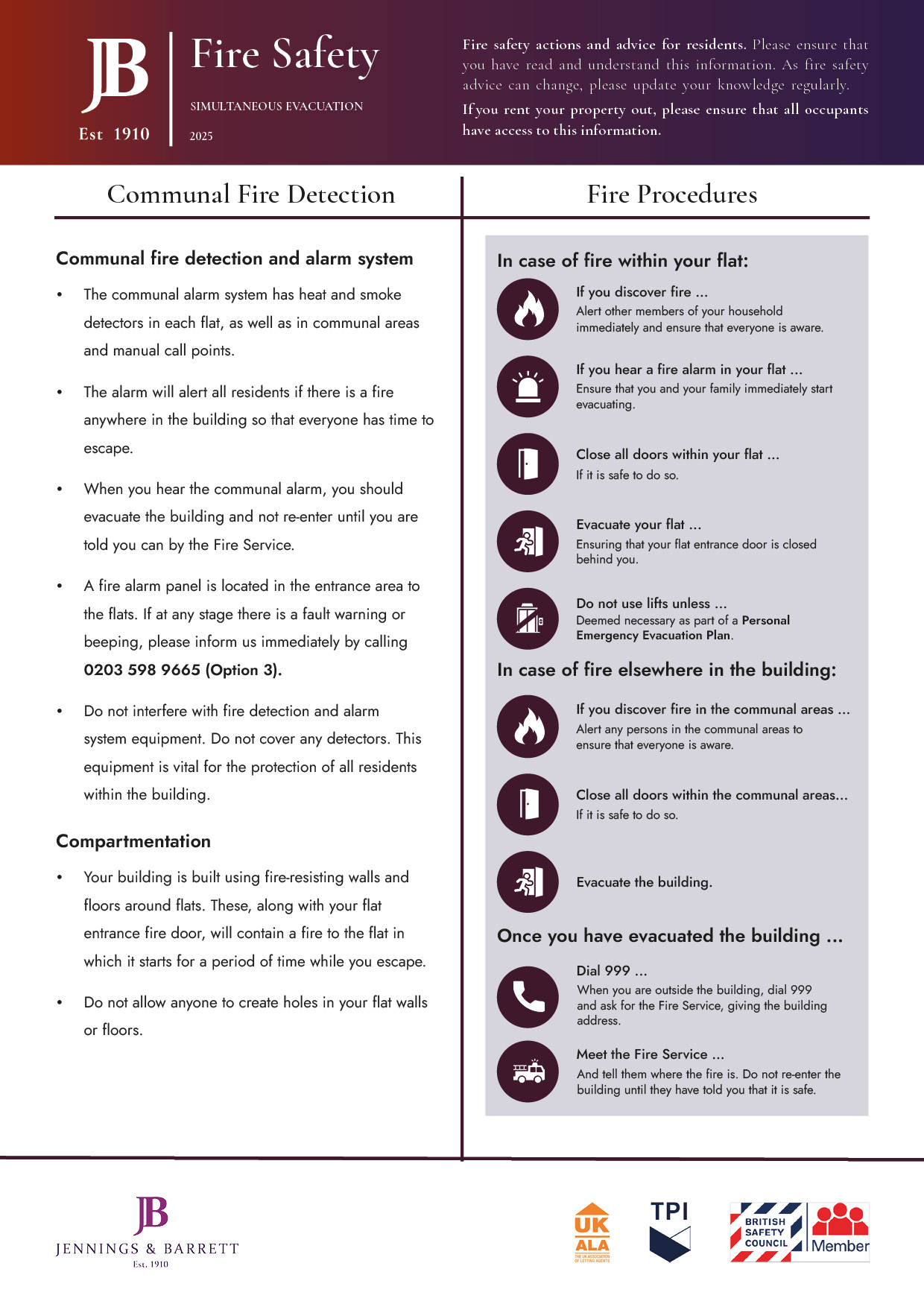
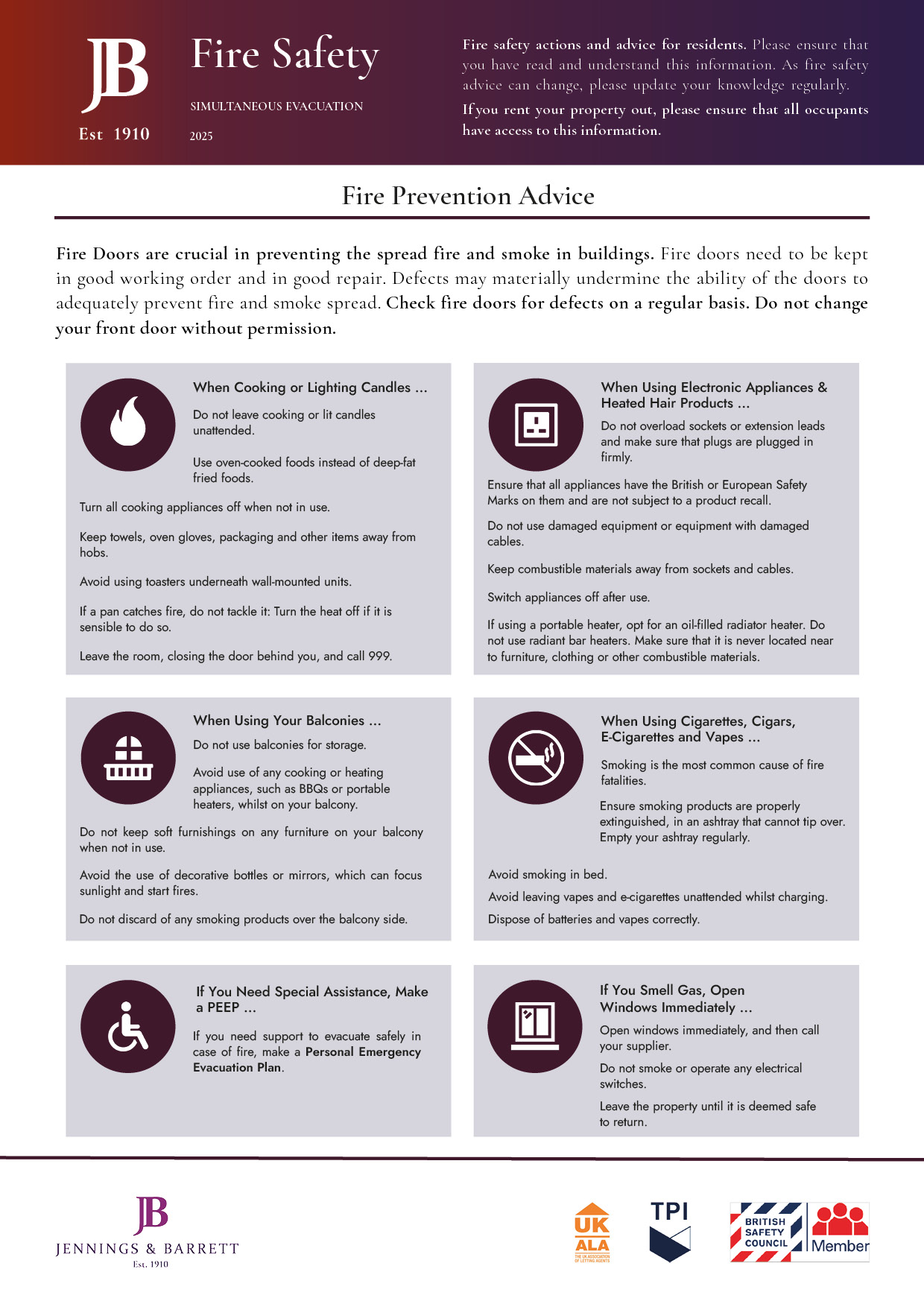
Simulatenous Evacuation Procedures are put in place because:
- You may reside in a building that could, in the case of a fire or other emergency, pose a significent and immediate risk to the safety of residents
- The building may not be able to support a "stay put" strategy due to being an older building. Converted and listed buildings may have unknown materials or unknown levels of compartmentalisation.

Personal Emergency Evacuation Plans (PEEP)
A personal emergency evacuation plans are created to help individuals to safely evacuate during emergencies if they cannot self-evacuate. A PEEP is tailored to address specific needs, such as mobility issues, sensory impairments, or cognitive difficulties.
You will be contacted once a year through the "Resident Profile Survey" to scope out any potential need for the creation a (or revision to) PEEP. Should you need a PEEP created or revised outside of this survey collection campaign, email operations@jenningsandbarrett.co.uk to begin the process.

Duties of a PAP/AP
Accountable persons and the principal accountable person are responsible for:
- the repair and maintenance of the common parts of a high-rise residential building
- managing building safety risks which involve the spread of fire or structural failure of the building
A high-rise residential building has at least:
- 7 storeys or is at least 18 metres high
- 2 residential units
The building must be registered with the Building Safety Regulator before people live there. These buildings are known as higher-risk buildings under the Building Safety Act 2022.

Your Responsibilities Towards Building Safety
Help keep your home and your neighbours safe from the risks of fire or structural failure by:
- Following the terms set out within your lease or rental agreement.
- In cases where your property is tenanted, taking appropriate steps to ensure that your tenant is aware of their responsibilities under the lease agreement and for fire safety.
- Informing the building management of any needs that you have relating to your abilities to understand and follow emergency evacuation instructions.
- Behaving responsibly.
- Keeping personal belongings out of communal areas.
- Keeping fire doors shut when not in use.
- Ensuring that your own flat front door is well maintained or replaced if advised to do so during Fire Door Assessments.
- Installing and maintaining appropriate smoke detection devices within your unit.
- Reporting any faults or damage to fire doors immediately to building management.
- Refraining from causing any damage, removing or interfering with relevant safety items such as fire doors, signage, sprinklers, smoke alarms, or fire extinguishers.
- Providing building management with any information that they request, that is needed to allow duties to be carried out.
- Raising awareness to building management about safety risks in the building.
- Providing access to the building management, where they reasonably request it, so that they can assess and maintain building safety risks.
- Comply with contravention notices, where they have been given.
- Comply with relevant Landlord & Tenant legislation if you rent your unit out

Find Out More & Protect Your Home
Please use the below resources to increase your knowledge about fire safety in your home, and to perform a free home safety check online.
